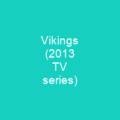Vikings: The Seafaring People Who Shaped History
Imagine a time when the seas were not just paths for trade but battlegrounds where fierce warriors sought fortune and fame. This was the era of the Vikings, who roamed from Scandinavia to the far corners of Europe during the late 8th to the late 11th centuries. Their legacy is as complex as it is fascinating, blending tales of raiding, trading, and settling into a rich tapestry that continues to captivate historians and enthusiasts alike.
Origins and Culture
The Vikings spoke Old Norse and followed their own unique laws, art, and architecture. Most were farmers, fishermen, craftsmen, and traders, but they are perhaps best known for their seafaring prowess. The term ‘Viking’ itself is intriguing; it originated from the Old English wicing ‘settlement’ or the feminine vík ‘creek’, suggesting a connection to coastal areas.
Expansion and Settlement
The Vikings established Norse settlements and governments in various parts of Europe, including England, France, and Russia. They also voyaged as far as North Africa, the Middle East, Iran, and Arabia, reaching North America before Christopher Columbus. As the Viking Age came to an end, the Norse homelands were consolidated into three larger kingdoms: Denmark, Norway, and Sweden.
Impact on Europe
The impact of Vikings on medieval history is profound. They established settlements in Iceland, Greenland, Normandy, and Eastern Europe, opening new lands through their navigational skills. The term ‘Viking’ expanded to include not only seaborne raiders but also any member of the culture they produced from the late 8th to the mid-11th centuries.
Decline and Legacy
The Viking Age in Scandinavian history is taken to have been the period from 793 until 1066. As the era drew to a close, Scandinavia underwent significant cultural changes. The Catholic Church gained influence, and royal dynasties legitimized their power through Christianization. Towns emerged as administrative centers, and monetary economies developed based on English and German models.
Archaeological Insights
A wealth of archaeological findings has provided insight into Viking culture, activities, and beliefs. Runes were used for writing and reading, with thousands of stones bearing runic inscriptions found in Scandinavia. These inscriptions often record names of participants in Viking expeditions and details about the lives of families.
Modern Relevance
The Vikings’ influence can be seen in modern languages such as Swedish, Norwegian, Danish, Faroese, and Icelandic. Their legacy is preserved through vernacular literature, place names, runic inscriptions, and linguistic connections to modern languages. The larger stone was raised by Harald Bluetooth to celebrate the conquest of Denmark and Norway’s conversion to Christianity.
Conclusion
The Vikings were not just raiders but explorers, traders, and settlers who left an indelible mark on history. Their legacy continues to inspire modern popular culture, from TV shows like ‘Vikings’ to video games and reenactments. As we delve deeper into their world through archaeology and genetics, the true story of these seafaring people becomes clearer, reminding us that history is a dynamic narrative waiting to be uncovered.

You want to know more about Vikings?
This page is based on the article Vikings published in Wikipedia (retrieved on January 14, 2025) and was automatically summarized using artificial intelligence.







